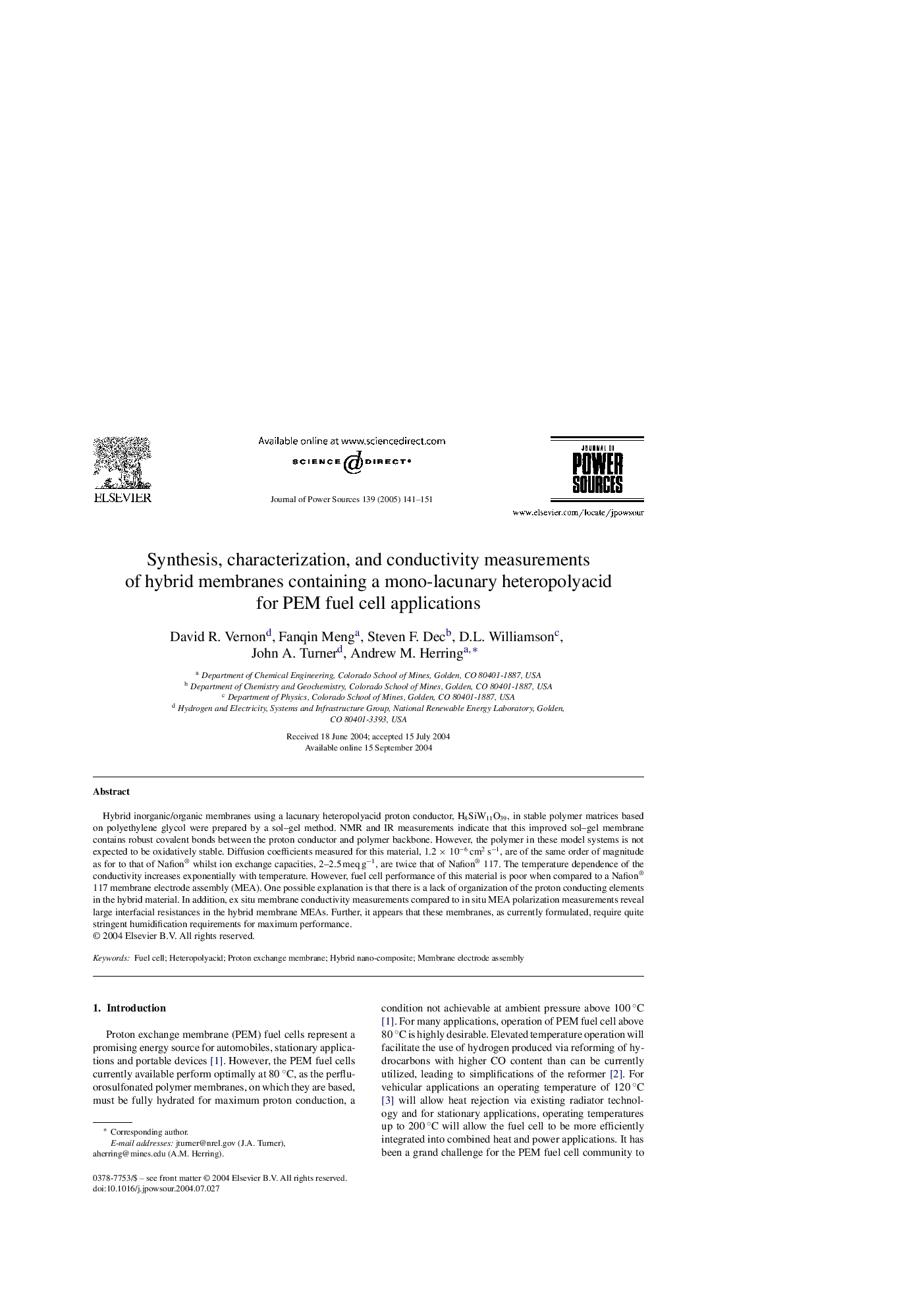| Article ID | Journal | Published Year | Pages | File Type |
|---|---|---|---|---|
| 9760508 | Journal of Power Sources | 2005 | 11 Pages |
Abstract
Hybrid inorganic/organic membranes using a lacunary heteropolyacid proton conductor, H8SiW11O39, in stable polymer matrices based on polyethylene glycol were prepared by a sol-gel method. NMR and IR measurements indicate that this improved sol-gel membrane contains robust covalent bonds between the proton conductor and polymer backbone. However, the polymer in these model systems is not expected to be oxidatively stable. Diffusion coefficients measured for this material, 1.2 à 10â6 cm2 sâ1, are of the same order of magnitude as for to that of Nafion® whilst ion exchange capacities, 2-2.5 meq gâ1, are twice that of Nafion® 117. The temperature dependence of the conductivity increases exponentially with temperature. However, fuel cell performance of this material is poor when compared to a Nafion® 117 membrane electrode assembly (MEA). One possible explanation is that there is a lack of organization of the proton conducting elements in the hybrid material. In addition, ex situ membrane conductivity measurements compared to in situ MEA polarization measurements reveal large interfacial resistances in the hybrid membrane MEAs. Further, it appears that these membranes, as currently formulated, require quite stringent humidification requirements for maximum performance.
Related Topics
Physical Sciences and Engineering
Chemistry
Electrochemistry
Authors
David R. Vernon, Fanqin Meng, Steven F. Dec, D.L. Williamson, John A. Turner, Andrew M. Herring,
